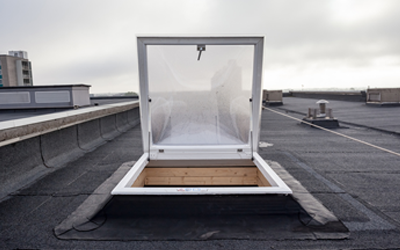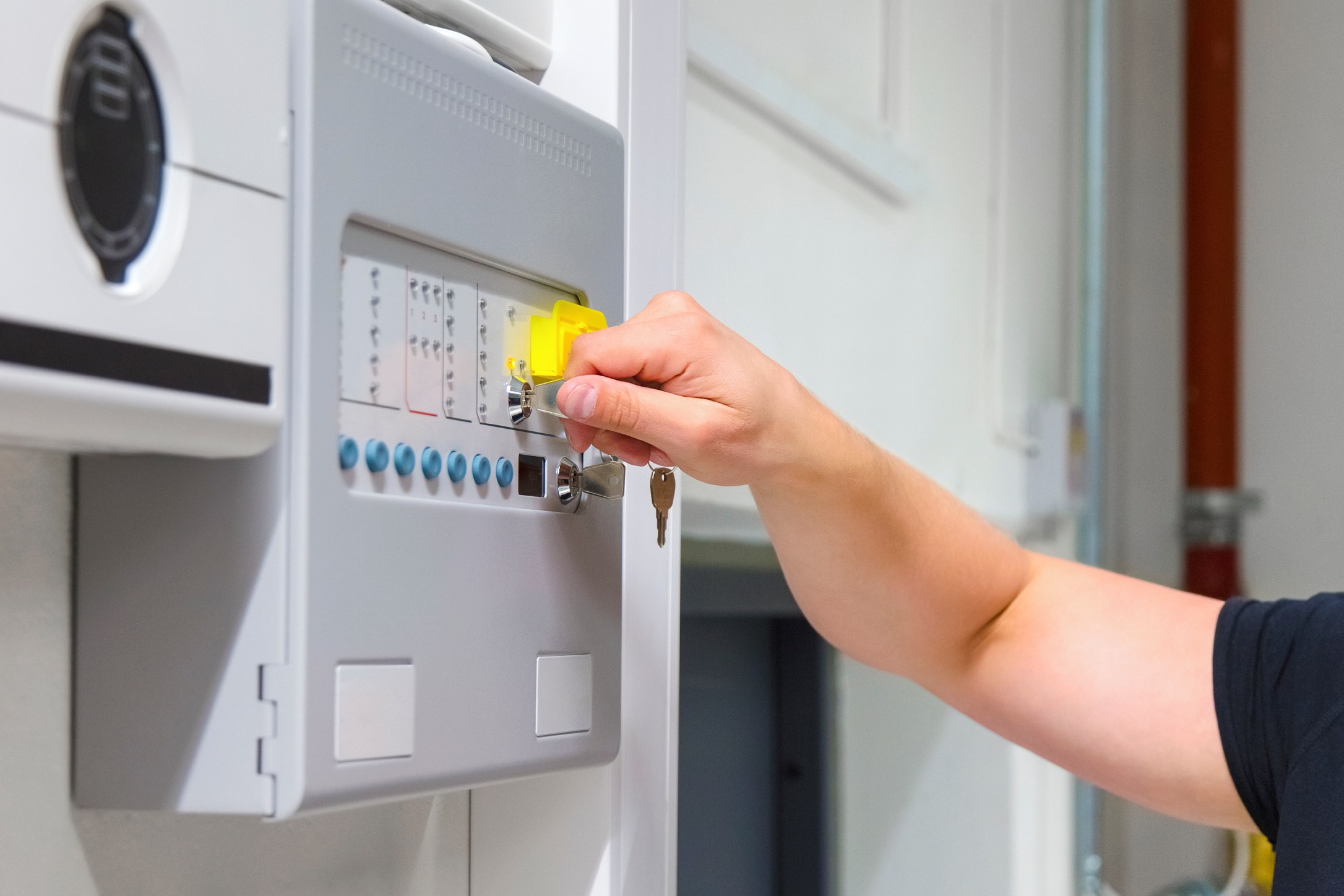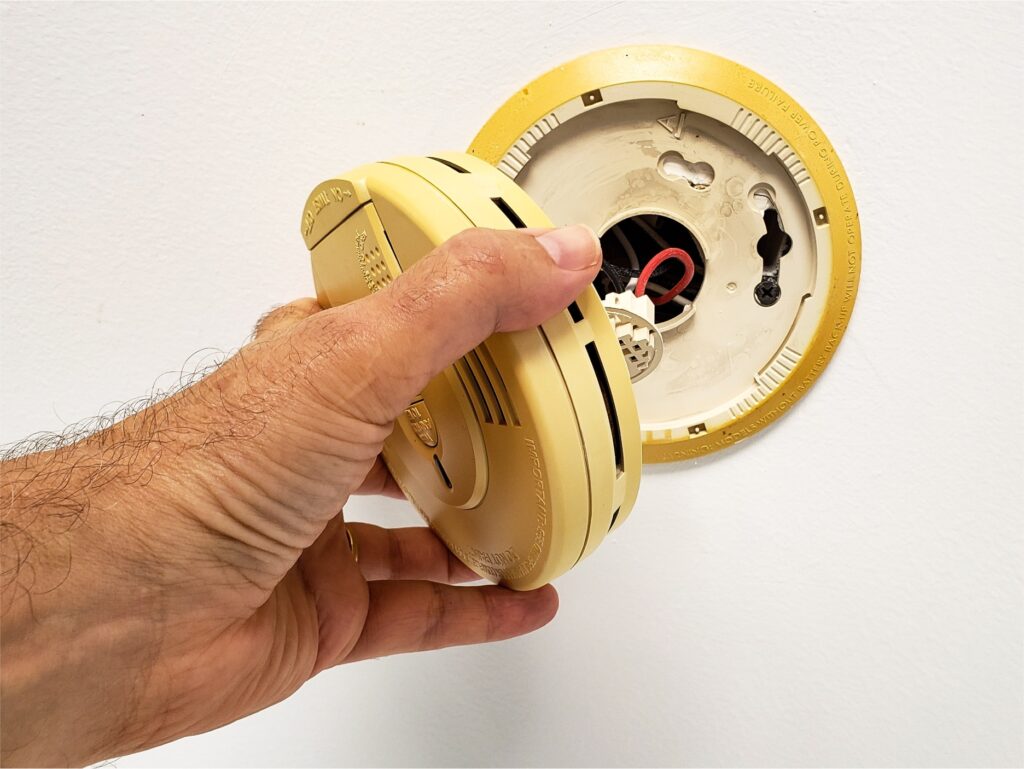During the festive season, it’s easy to overlook fire safety. With our minds on buying last-minute presents, prepping the turkey, and spending time with our loved ones, fire safety is — unsurprisingly — not a priority.
But, according to the NFCC, people are 53% more likely to have a fire on Christmas Day than on any other average day in the year. Plus, there’s a 10% uplift in risk of an accidental home fire occurring in December than in any other month of the year.
The combination of decorative lighting, additional electrical appliances, open flames, and an often-overlooked need for home security can create the perfect conditions for an accident. So, how can you keep your home safe?
Understanding the seasonal fire risks
A home filled with festive decorations, candles, and cooking appliances working overtime presents more fire hazards than at any other time of year. Electrical faults, unattended flames, overloaded sockets, and dry Christmas trees can all contribute to heightened risks. With many people travelling during the holidays or leaving their homes unoccupied for longer than usual, the potential for undetected fires increases significantly.
Kitchen fires remain one of the most common causes of household emergencies during the festive period. The increased use of ovens, hobs, and deep-fat fryers — combined with the distractions of guests and celebrations — can lead to unattended cooking, one of the leading causes of domestic fires.
Grease build-up, flammable materials near heat sources, and the temptation to leave something simmering while answering the door all add to the potential danger.
Keeping electrical decorations safe
A home illuminated by twinkling fairy lights is a seasonal favourite, but overloaded plug sockets, faulty wiring, and substandard extension leads can turn a festive display into a fire hazard. Checking that all decorative lights meet safety standards, using surge protectors, and ensuring that outdoor lights are specifically designed for exterior use are all simple but effective measures.
Switching lights off before leaving the house or going to bed significantly reduces the risk of an electrical fire starting unnoticed. Timers or smart plugs can offer a convenient way to ensure that decorations do not remain on indefinitely.
Additionally, inspecting cables for any damage before plugging them in will help avoid short circuits that could spark an unwanted emergency.
Reducing the risk of candle and fireplace hazards
Candlelight may create a cosy and inviting atmosphere, but it remains a frequent cause of house fires during the holidays. Placing candles away from flammable materials such as curtains, decorations, and wrapping paper is essential. Where possible, switching to battery-operated LED alternatives provides the same warm glow without the associated risks.
For homes with open fires or wood-burning stoves, ensuring that chimneys are professionally cleaned before the winter season begins is an important step in preventing chimney fires. Fireguards should be in place, and embers must always be properly extinguished before leaving the house or going to bed.
Safe storage of flammable materials
Wrapping paper, packaging, and seasonal decorations can quickly accumulate, creating potential fuel for a fire. Keeping these materials away from heat sources and ensuring that they are properly disposed of can prevent an unnecessary hazard. Real Christmas trees, if not watered regularly, can dry out and become highly flammable, making them a risk factor in homes with open flames or excessive heat.
Ensuring smoke alarms and fire extinguishers are functional
An early warning system is crucial in the event of a fire, yet many homeowners neglect to test smoke alarms regularly. During the holiday period, when fire risks are heightened, checking that alarms are in working order should be a priority. Installing interconnected smoke detectors across different rooms ensures that an alarm triggered in one area is heard throughout the house.
Fire extinguishers should be easily accessible, and everyone in the household should be familiar with their use. In particular, having a fire extinguisher in the kitchen can help contain small cooking fires before they escalate. Fire blankets are another valuable addition, providing a quick method for smothering flames.
Home security and fire safety go hand in hand
A well-secured home is not just about preventing burglary; it also plays a role in fire safety. Smart home security systems equipped with smoke detection and remote monitoring can provide homeowners with peace of mind, particularly if they are travelling for the holidays. Many modern CCTV systems offer real-time alerts, allowing for a quick response if a fire breaks out while the house is empty.
Monitored alarm systems provide an additional layer of protection, ensuring that emergency services are alerted even if no one is home to hear the alarm. For those spending time away, notifying a trusted neighbour to keep an eye on the property adds another safeguard against potential incidents.
A fire escape plan for every household
While prevention is always the best approach, having a well-rehearsed fire escape plan ensures that, should the worst happen, everyone in the household knows what to do. Identifying exit routes, keeping escape paths clear, and ensuring that all family members are aware of the nearest safe exit can make a significant difference in an emergency.
Taking fire safety seriously during the holiday season does not mean dampening the festive spirit. Instead, it ensures that the focus remains on celebrations, gatherings, and cherished moments with loved ones, rather than the avoidable consequences of fire-related incidents.
Explore our range of smart home security solutions today, and discover how we can help you monitor your home — for peace of mind during the holiday season.


